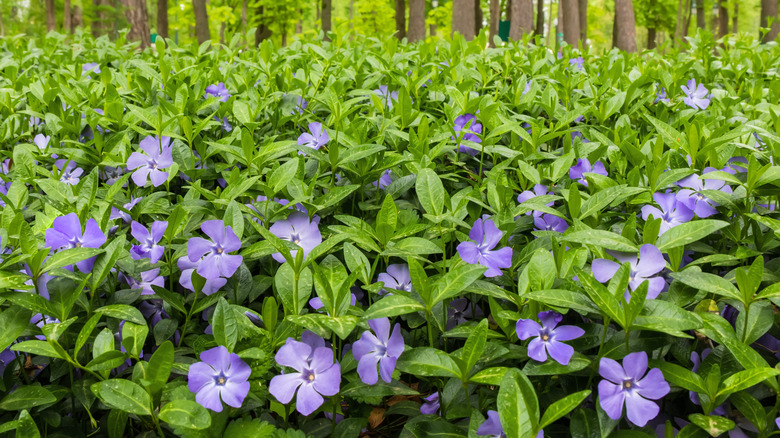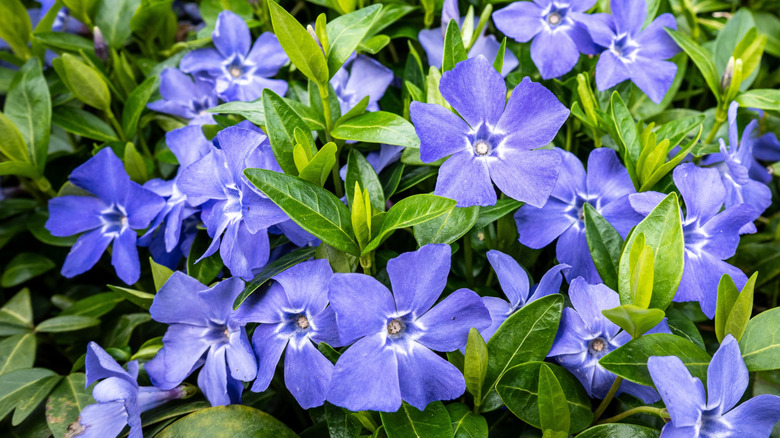Tips For Growing And Controlling Vinca Minor Without It Taking Over Your Backyard
We may receive a commission on purchases made from links.
Thinking about adding periwinkle (Vinca minor) to your garden? Then you'll want to learn how to care for your periwinkles to keep them from staging a botanical coup. This charming ground cover, adorned with delicate purple, blue, or white flowers, thrives in USDA Hardiness Zones 4 to 8 and can transform bare spots into lush, vibrant areas. It can even be planted on slopes to help avoid soil erosion. With its cascading shoots spreading in all directions, periwinkle excels at quickly filling empty spaces. However, its vigorous growth can easily spiral out of control, potentially overwhelming other plants if not managed properly. With a little care and attention, you can enjoy its beauty without letting it dominate your garden.
To keep your periwinkle under control, monitor it regularly. If it starts encroaching on other plants, you can dig up the problematic sections and prune the edges of the growth to contain the spread. Look for and remove offshoots, as these are the primary way periwinkle spreads and multiplies. Also, consider creating a physical boundary, such as fencing or landscape edging, to limit its growth. You can also discourage excessive spreading by reducing fertilizer and water, which might otherwise promote vigorous growth. Alternatively, enjoy the beauty of trailing periwinkle foliage in containers, like the Outland Living 6-Foot Raised Garden Bed, to keep it neatly confined. With thoughtful care and containment strategies, periwinkle can remain a stunning, manageable addition to your garden, offering lush greenery and vibrant blooms without overwhelming your space.
Growing vinca minor groundcover
If you've decided periwinkles are the right choice for your space, you'll want to plant them in the spring or fall. This sun-loving plant thrives in full sunlight and warmth, so be sure to select a location with abundant light. When planting, spacing periwinkle plants 12 to 18 inches apart is standard practice. However, planting them at 6-inch intervals ensures the ground cover fills in completely within a year, providing your flowerbed with a lush, mature look in no time!
However, you may want to be cautious when considering planting periwinkle for legal reasons. It's important to note that Vinca minor is listed as invasive in many states, including Oregon, Wisconsin, Michigan, Illinois, Kentucky, Tennessee, Georgia, South Carolina, Virginia, West Virginia, Maryland, Delaware, Rhode Island and New Hampshire. Check the Invasive Plant Atlas to make sure it's not considered invasive in your area before planting. If you do live in an area where Vinca minor is invasive, consider a native groundcover plant that won't take over your yard instead.

